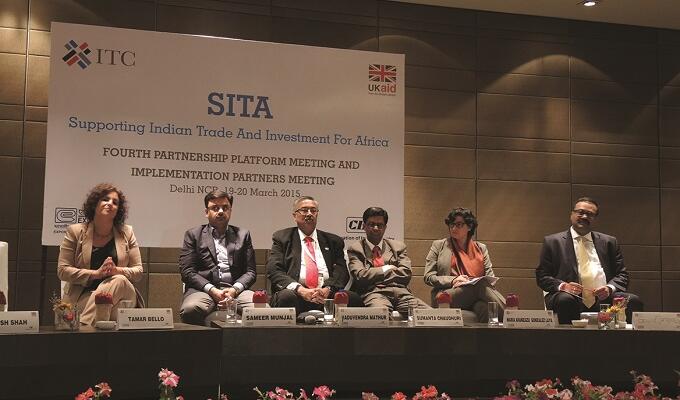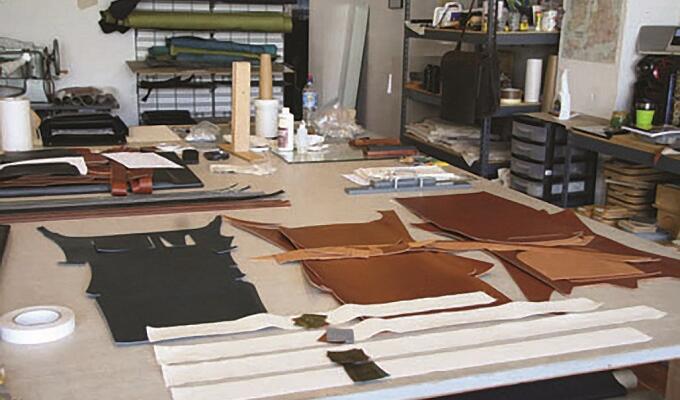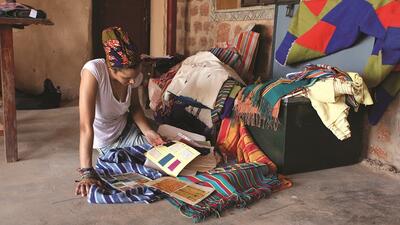


Meeting India’s market needs with East African goods
Indian demand for leather goods outstrips supply. A solution to the shortage lies just across the ocean: partnering with East African businesses, which have materials to meet the need and a desire to upgrade their countries’ leather sector.
This presents an opportunity for companies like India-based Superhouse Limited, a manufacturer and exporter of leather shoes, handbags and garments to Europe and the United States of America, which is looking to grow the business through new suppliers.
‘We are already exploiting the maximum market of the Indian leather industry,’ says Ajay Kumar Singh, the company’s assistant manager of international marketing. ‘Of course we are looking at good suppliers who can supply red and blue leather, crust leather and finished leather.’
Superhouse sources materials from traditional leather-producing countries such as Argentina, Brazil and Pakistan. The quality of the leather from these countries is high, and the prices reflect it.
‘To compete with China and others who compete with us, we need very competitive prices of raw leather and finished leather,’ Singh says. ‘So that next destination is Africa. And East Africa is the best source market on the continent because of these countries’ processing powers.’
Equipping East African producers to exportThere is room to enhance that power. The United Republic of Tanzania, for example, has strong growth potential in the sector as it was once one of the biggest exporters of leather on the continent. Following a change in national policy, the industry fell into a slump, according to the Leather Association of Tanzania.
To revive it, the Tanzanian business community and government are now working to develop strategies to fuel production of value-added leather goods – rather than raw hides – for export.
‘If we could convince most of the Indians who want to invest in this sector to come and invest in the tanneries in Tanzania, and the government did its job to enforce laws, then we understand that the sector will definitely start to pick up,’ says Elibariki N. Mmari, board member of the Leather Association of Tanzania and chairman of the Mwanza Region of the Tanzania Chamber of Commerce, Industry and Agriculture.
Filling the market gapThere are also global players involved in the process. The International Trade Centre’s (ITC) Supporting Indian Trade and Investment for Africa (SITA) project is aimed at building business partnerships and filling Indian demand for goods and services by tapping the capacity of East African countries – namely Ethiopia, Kenya, Rwanda, Uganda and Tanzania – to meet it.
‘It’s also about having increased value added to those exports, creating new markets, thinking about more ways that India and East Africa can partner up, for both parties to grow,’ says Tamar Bello, head of the global partnerships team at the United Kingdom’s Department for International Development, which funds SITA.
As part of the project, Indian companies will invest in their African counterparts’ businesses by sharing know-how, technology and quality expectations. Sectors involved include spices and essential oils; leather; coffee; cotton, textiles and apparel, business process outsourcing; and information technology-enabled services.
‘SITA will work closely with businesses – both East African and Indian – to build and nurture partnerships across the board, which include technical, managerial and financial skills,’ says Govind Venuprasad, SITA’s senior coordinator. ‘In getting there we will leverage our relationships with governments and institutions to enable, promote and sustain these partnerships.’
Building a foundationFor business partnerships to last, it is not enough to meet mutual needs: enterprises and investors alike need a stable business environment built on sound policies and access to key information, including information on markets, standards and competitors.
An umbrella focus of the SITA project is to create a more business-friendly environment in the partner countries by helping businesses to better understand and take advantage of policies. Examples include the Government of India’s duty-free tariff preference scheme, which offers duty-free market access to exports from least developed countries on 98% of Indian tariff lines.
Trade and investment support institutions play a key role in this programme by serving as knowledge hubs, providing exporters with easy access to the information they need to make business decisions.
‘SITA will strengthen the trade and investment support institution infrastructure in East African countries through peer learning, adoption of best practices, networking and capacity building,’ says ITC Executive Director Arancha González. ‘These institutions equip small and medium-sized enterprises with the targeted knowledge and market intelligence they need to become more competitive in global markets and create business linkages within and across countries.’
This kind of assistance is in demand. Having such a resource could provide immediate benefits by eliminating wasted effort, according to Steve Jones, chief executive officer of Forestry and Agriculture Investment Management of Rwanda.
‘What we’re saying is find somebody who needs what we do,’ Jones says. ‘We’re not a maize grower, we’re not a wheat grower, we’re not a soybean grower. What we are is we can grow specialty items. So take advantage of what we can do and concentrate the effort that way.’
Jones adds that his company is able to adapt products to meet buyers’ quantity and quality expectations, provided they’re within his scope of operations. What he needs are specifics so he can deliver goods according to the requirements. SITA is designed to facilitate that connection, according to Yaduvendra Mathur, chairman and managing director of the Export- Import Bank of India.
‘SITA is the template which we would like to learn from and take more Indian businessmen, not only to these five countries but to Latin America, to other South Asian economies,’ Mathur says. ‘This is the only way that we can address the huge challenges of poverty eradication and become developed economies.’
For more information on SITA, please visit www.intracen.org/sita







